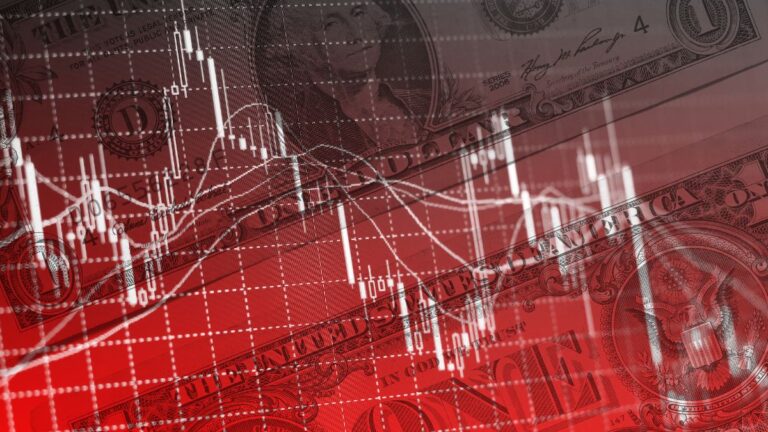Wall Street suffered a sharp sell-off on Friday, wiping out more than $1.1 trillion in market value. The Dow Jones Industrial Average dropped 1.23%, the S&P 500 slid 1.6%, and the Nasdaq Composite sank 2.24%, Reuters reported. The market ended in red because of a weaker-than-expected July jobs report and the announcement of sweeping new tariffs by US President Donald Trump on 68 countries and the European Union, ranging from 10 to 41 per cent. The tariffs, initially slated to come into effect in April, have been delayed twice. They are now set to take effect on August 7.
The Nasdaq and S&P 500 posted their biggest one-day declines since April and May, respectively, while the Dow recorded its worst single-day performance in over a month.
Weak July report
The Bureau of Labor Statistics (BLS) on Friday reported that only 73,000 jobs were added in July 2025, which was significantly less than the projected one lakh jobs. This weak jobs growth, along with downward revisions to job numbers of May and June – 2.5 lakh jobs were slashed – signalled a clear slowdown in the job market and raised concerns about the overall health of the economy.
Because job growth was much weaker than anticipated and the unemployment rate went up to 4.2%, investors interpreted this as a sign that the US economy might be heading towards a slowdown or even a recession. This led to further selling pressure on US stocks, as investors lost confidence in continued economic growth.
Trump also fired the “Biden appointee” BLS head, Dr Erika McEntarfer, over the weak jobs report with immediate effect, and accused her of “manipulating” monthly job numbers for “political purposes”.
Following this, traders have raised their bets for a September interest rate cut to 81.9 per cent, per CME’s FedWatch tool.
At the same time, Treasury bonds rallied because investors sought safer assets amid the crash. Yields on the 10-year and 30-year Treasury bonds dropped to around 4.21% and 4.8%.
Trump’s tariffs
Trump has released revised tariff rates on imports from 68 countries and the EU, set to take effect on August 7. The countries, which are not named, will only face a standard 10 per cent tariff. Syria will pay the highest tariff – 41 per cent, followed by Laos and Myanmar at 40 per cent and Switzerland at 39%. Canada’s tariff on goods not covered by existing trade agreements will rise to 35%, up from the previous 25%.
List of countries affected by new US tariffs
The markets closed in red as the tariffs increased the costs for US companies that depend heavily on imported goods and materials. This, in turn, can reduce corporate profits and lead to slower economic growth. On top of that, investors fear that the tariffs could prompt retaliatory measures from other countries, further disrupting global supply chains.
According to a report by CNN, investors had been expecting Trump’s tariffs and believe that they should settle at around 15% this year and that their implications are manageable.
Trump said on Friday that the Federal Reserve’s board should take control if the central bank’s Chair, Jerome Powell, continues to resist lowering interest rates. Powell, however, has indicated the central bank was in no rush to do so.
“Jerome ‘Too Late’ Powell, a stubborn moron, must substantially lower interest rates. Now, if he continues to resume, the board should assume control, and do what everyone knows has to be done,” Trump wrote on Truth Social.
